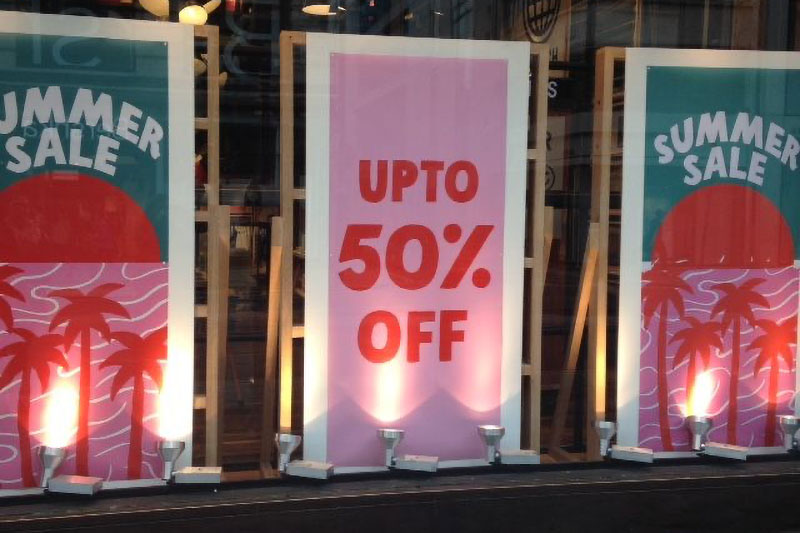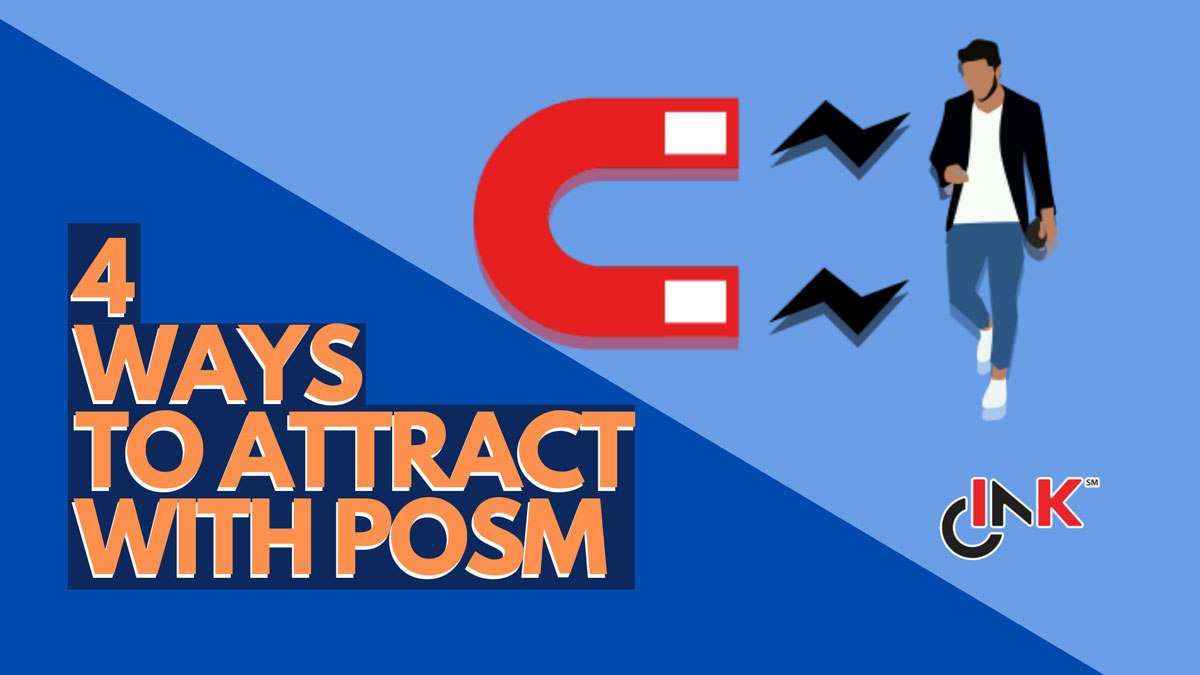
Retail marketing can be a tough terrain. It’s not easy to win over customers when you don’t properly show them what you have to offer in ultra competitive retail settings.
That’s where Point of Sale materials (POSM) come in. They’ve been around in retail stores for the longest time and we still see these used in many ways today. While they can be used in creative ways, you first need to get the basics right.
Here are 4 factors you need to consider to make the best choices for your POSM efforts:
1. Overall look and feel
As much as you have good products, whether or not they can win over customers depends a lot more on how they’re marketed in-store. A good 74% of purchase decisions happen in-store and that comes down to how customers feel about them.
That’s why their POSM has to be considered in terms of instinctual appeal. Because shoppers buy based on emotions, brands have to consider:
- Size – Bigger displays are more eye-catching than smaller ones, but smaller ones work better up close. It depends on context, and at what size it is optimally attention-grabbing.
- Design – When you know how customers respond emotionally to colors, faces, fonts and various other visual elements in retail settings, you can create more effective designs.
- Copywriting – Reading good copywriting in visually cluttered retail settings is like getting clear, memorable directions when you’re lost. It lets your brand stand out through clarity.
- Materials – High quality materials create better impressions with shoppers and can safely accommodate various layouts, but it’s important to balance that with being cost-effective too.
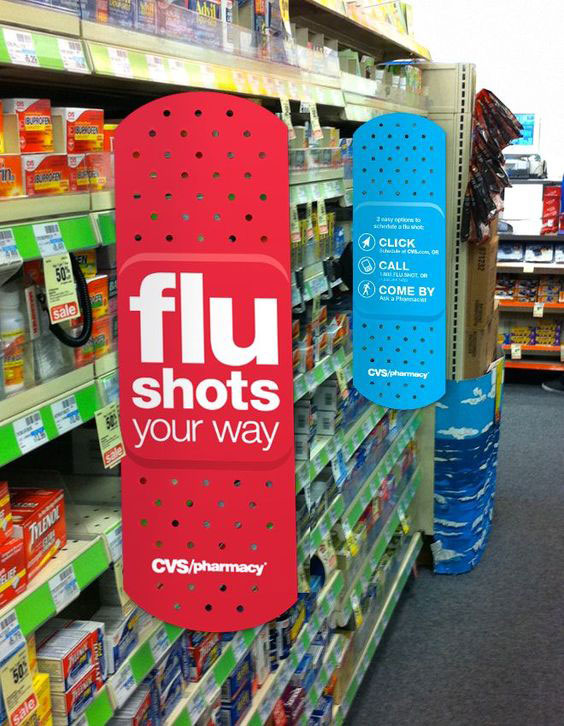
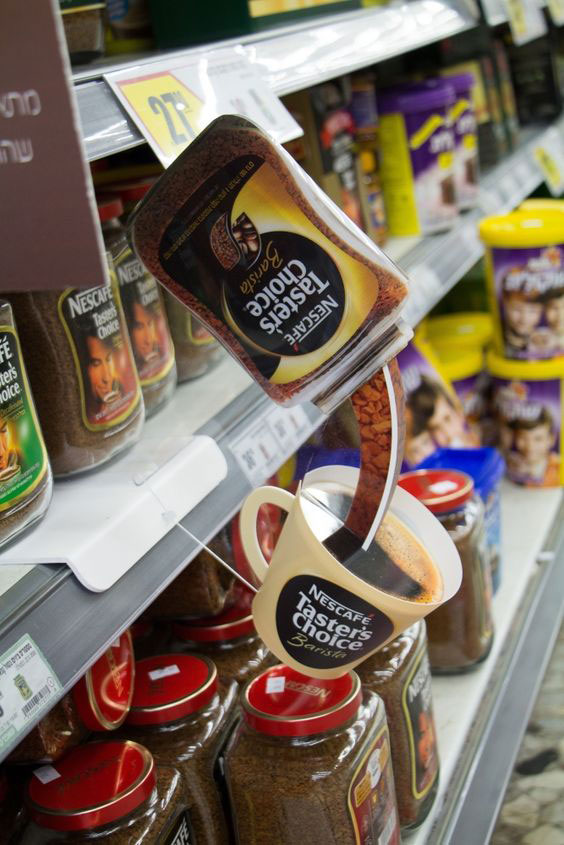
Shelf talkers by CVS and Nescafre (Source: Pinterest & Pinterest)
2. The right messaging
Great visuals can help catch shoppers’ attention, but strong copywriting converts them into buyers. It communicates how your product uniquely solves their problem.
With POSM, telling shoppers why they should buy from you becomes infinitely more complicated than simply saying “we sell this.” It has to get a clear message across quickly while remaining relevant and engaging.
This applies to different seasons too. How a brand portrays itself during festive periods and off-peak seasons differ, along with the type of promotions it runs. Depending on the event or time of year, your product copywriting and design would have to differ, though still retaining the essential brand messaging.
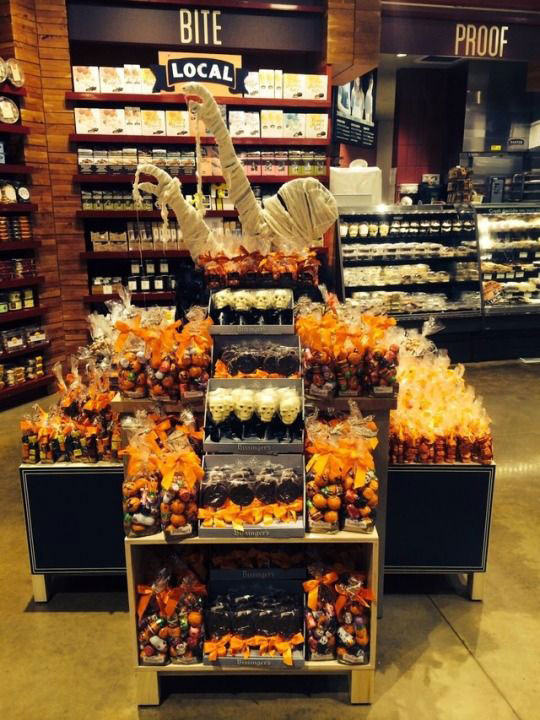

Halloween themed POSM (Source: Pinterest & Pinterest)
Furthermore, both offline and online channels should no longer be seen as separate but interdependent. Since 63% of shopping journeys start online, there is a need for brands to align what shoppers see online with that is sold in physical stores.
While purchase decisions would mostly still be made in-store, this is an opportunity to nurture them as leads even before they step into the store—from their Google searches or social media to the messaging on their POSM. Therefore a brand’s messaging has to be designed as an omnichannel experience.
3. Location strategy
For places like supermarkets, a good rule of thumb to start with is to place your products and accompanying POSM in high-traffic locations in the store.
The logic of complementary products being closest in proximity is also a proven way to increase cross-selling, as it would make products seem less complete without their complements. For instance, pasta + pasta sauces, burger patties + cheese, tea + milk etc.
Location also informs the type of POSM that’s most appropriate. At the ends of aisles, you’d almost always have gondola ends. Along aisles, floor stickers work well due to the confined space; whilst on aisle shelves you’d find shelf talkers, shelf strips or wobblers.
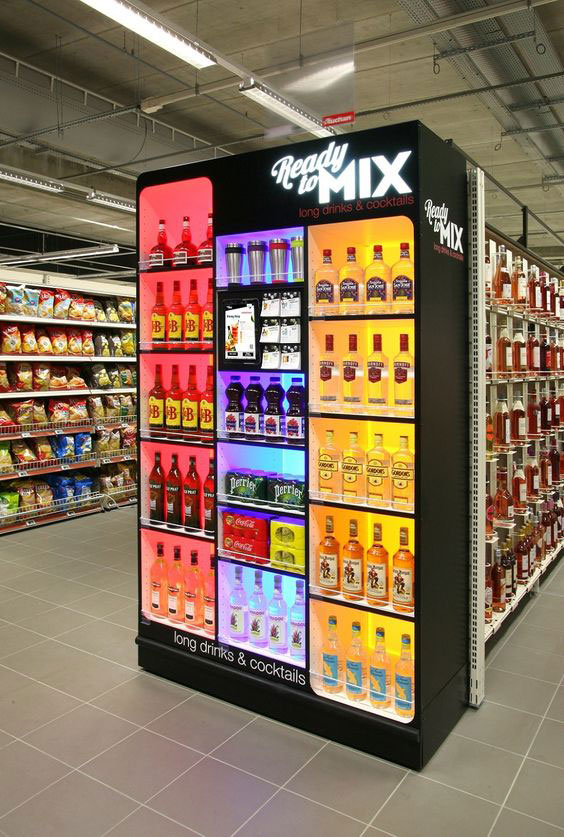
Eye-catching end cap (Source: Pinterest)
In more open spaces near checkout counters you can find dump bins to grab fistfuls of a small product, typically of the impulse purchase variety. You’d also find free standing displays which showcase products in a more orderly manner, allowing for more design flexibility than other POSM options.
Then there are spaces for promoters to hand out food samples, as well as checkout counters which are great areas to place small, singular, or travel-size products that don’t require much purchase deliberation.
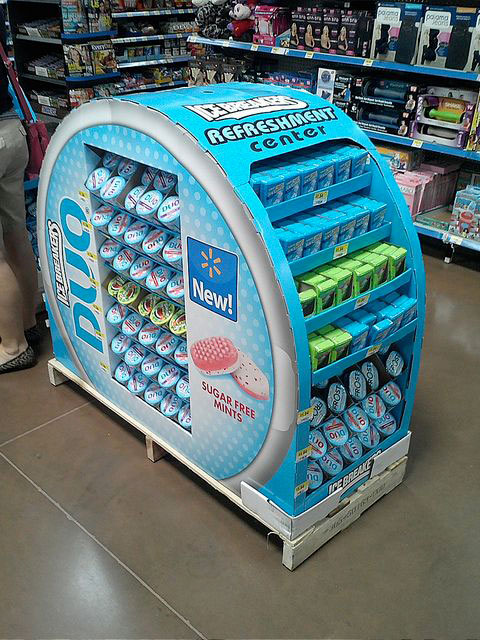
Unique free standing display (Source: Pinterest)
4. Relevant technology
Conventional forms of POSM can only do so much. Technology takes it further. But not all forms of innovative tech should be used in retail because they’re new or cutting edge. Instead of using, for example, virtual reality (VR) technology in grocery aisles, use innovative tools that are relevant to your retail marketing goals.
The most pertinent and accessible one is the use of smartphones for in-store purchase considerations. A survey by Mobile Marketer via AdColony in 2019 revealed that 61% of customers view their phones as a guide for shopping, from checking reviews to researching deals, comparing prices and personal cataloging.
There appears to be an opportunity in using POSM to promote the download and use of in-store apps to aid in that purchase consideration process. A simple QR code could do the trick.
Brands can also consider practical ways to make their POSM stand out using tools such as robotics, lighting, barcode scanner trolleys, voice interactivity, digital touch displays, live video streams and even augmented reality (AR) to stop shoppers in their tracks.
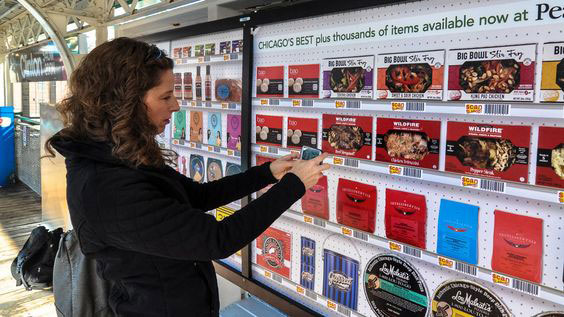
Virtual grocery shopping (Source: Pinterest)
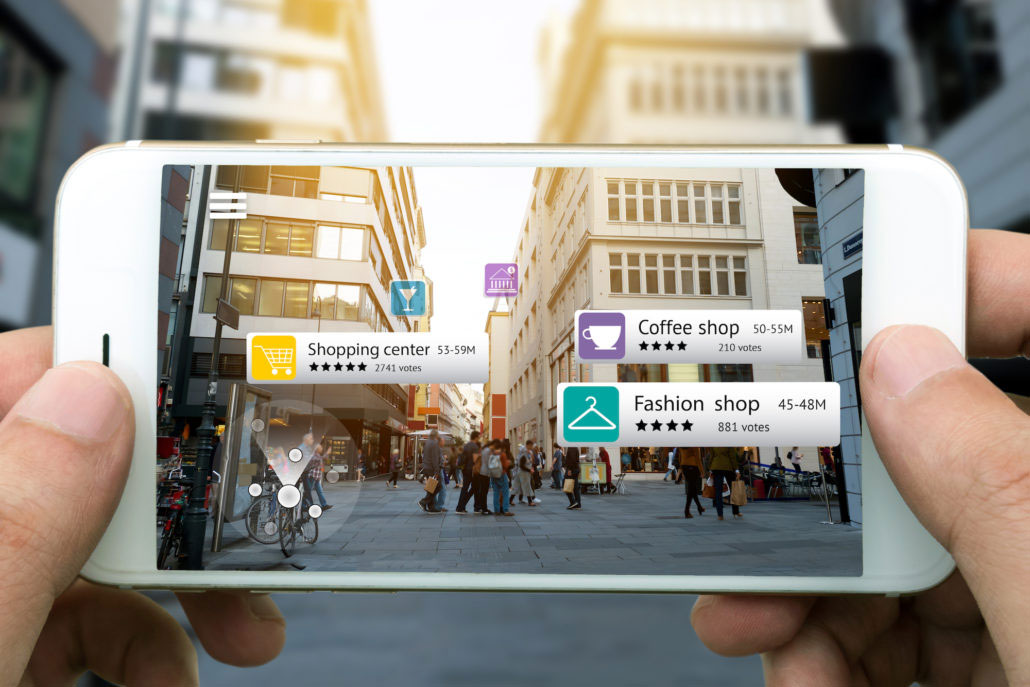
AR store navigation (Source: Chain Store Age)
Doing the POSM homework
Overall, what’s crucial is to plan ahead and have the right point of sale materials in place.
When planning your POSM, it’s important to consider how you want people to feel when they observe or interact with it. Refine your messaging to resonate with your main audience segment. You also need to study which locations would best maximize exposure for your product and brand.
Think about what type of technology would work best—just because something is innovative doesn’t mean it would be effective. At the end of the day, what matters is what’s relevant to the needs and behaviors of shoppers.




